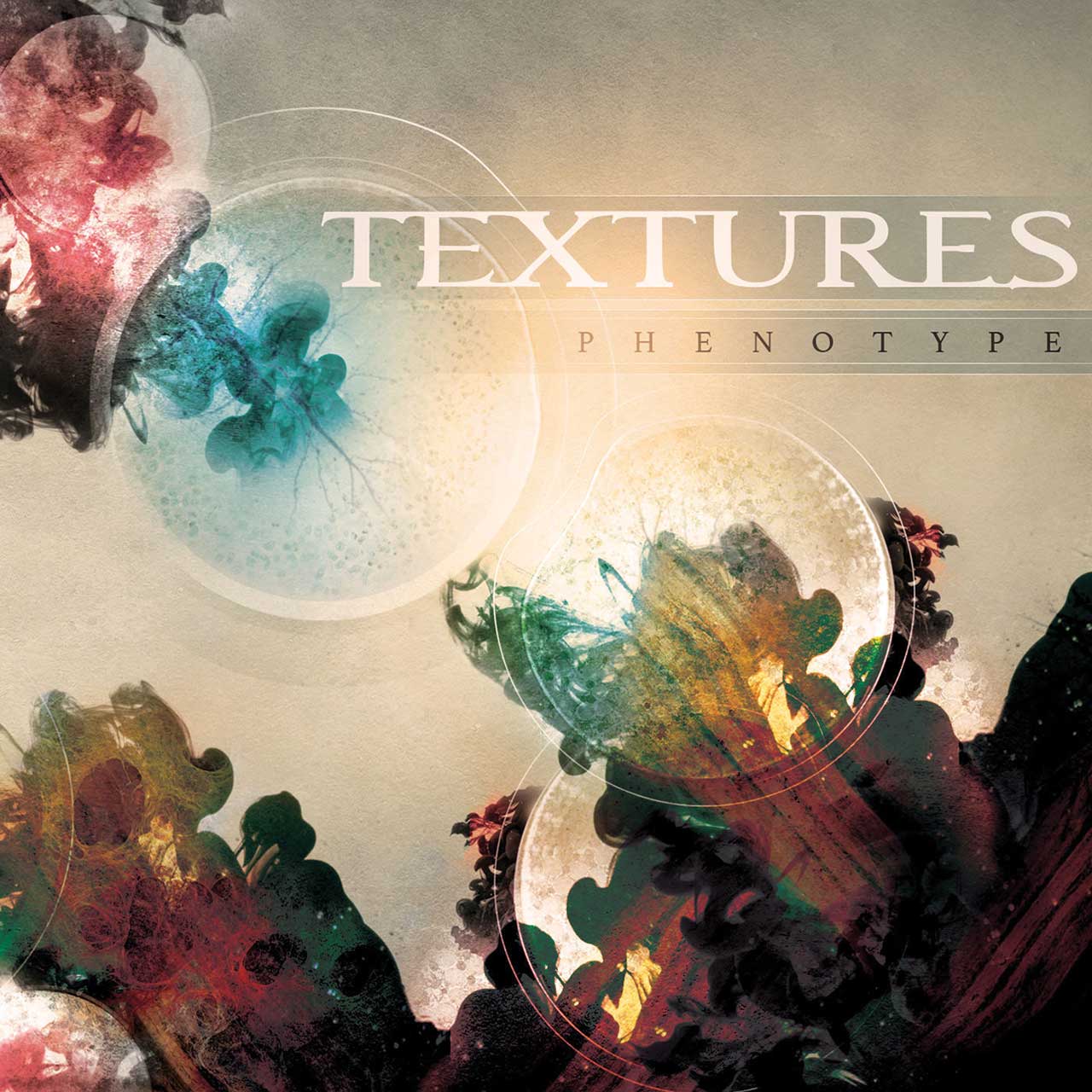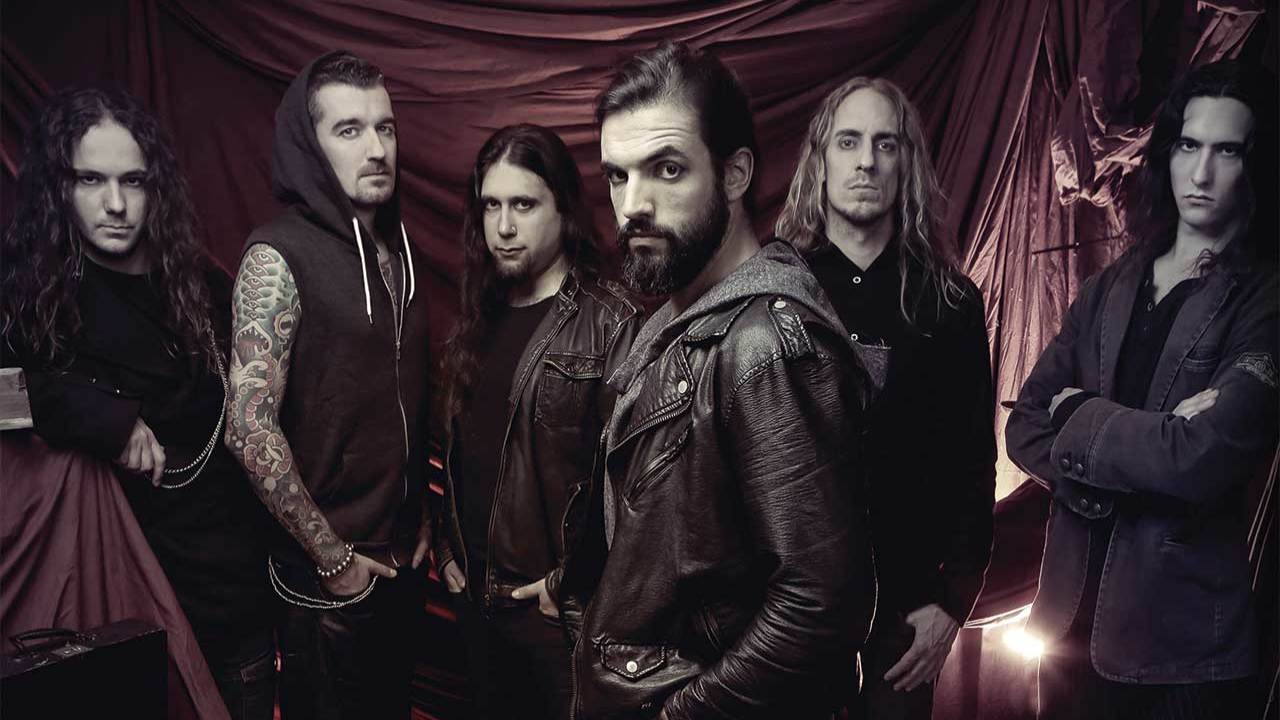During the making of Textures’ fifth album, a day came that would change the course of the band. A day where Stef Broks, founding member and drummer of the influential Dutch tech metallers, forced each member to stop work and take a long, hard look at the road they’d travelled, and envisage what lay ahead.
“I had to halt the guys and say, ‘Listen, do we really want to make just another album? Or do we want to do something completely different?’” remembers Stef. “I knew we couldn’t just write 10 songs for a new record and think that was going to be enough. This is our fifth album, and traditionally that’s a very important step for a band. It’s where reputations are cemented. We could carry on as normal, or we could really strive to make a statement. So we made the decision – we were going to make something that would make the fans sit up and take notice. Something we’d never even attempted before.”
Formed in 2001, Textures combined melodic death, industrial and groove metal to create a sound that aligned with the emerging tech metal scene, and what would later be labelled ‘djent’. Debut Polars (2003), and follow-up Drawing Circles (2006), were embraced by the underground, as the band slowly but surely built up a reputation for innovation. But despite the acclaim, many newer technical bands lately including the likes of Periphery and Tesseract gradually rose past Textures, playing bigger venues and selling more records. Lineup changes also led to an unfortunate five-year gap between last album Dualism and today. And that decision Textures made? It was to write an ambitious double album, Phenotype and Genotype, which they hope will become their magnum opus.
The band who embarked on this dual- record mission are very different to the one who wrote Polars back at the beginning of the century. Phenotype is their first record with guitarist Joe Tal, who replaced original guitarist/producer Jochem Jacobs in 2013, and it’s only the second one to feature keyboardist Uri Dijk and vocalist Daniel de Jongh. Just Stef and guitarist Bart Hennephof remain from the lineup that formed the band. Yet Stef explains the changes rebooted – and saved – Textures.
“We needed that,” Stef notes. “It freshened us up to have those new members, new ideas, come into the band. We work totally as a democracy – nobody comes in with pre-written songs and gives them to the new members to learn. Everybody who has come in during that period has played a part in what we are doing now, so there would be no Phenotype and Genotype without them… I probably wouldn’t even be here talking to you now without them!”
Singer Daniel, who joined from fellow Dutch metallers Cilice in 2010, also feels the wait for new music was justified.
“It was a long time, I will give you that!” he laughs. “But, let me tell you one thing about this band that I love – we will never settle for anything less than what we think is our maximum. When new members were coming in, we had to find our groove, our chemistry, and we worked hard on that. We made sure that this band was the best it could be before we went into a studio or out to play onstage. It’s a fragile thing, being in a band. You must make sure all of the elements are mixing together correctly. If they weren’t just right, then we weren’t going to put it out there. And it takes as long as it takes, you know?”
The six-piece – completed by bassist Remko Tielemans – began writing their double epic without a concept in mind. As music flowed out of them, “certain themes started reappearing”, recounts Daniel. Instead of following a character-led narrative, the albums are based on the band’s intention to “create a map of our musical traits”, according to Stef. Phenotype is a mass of wildly technical, screaming, throbbing metal, while Genotype, which the band are still working on, is due in 2017.
We decided to make the fans sit up and take notice
“There is no story running through these records,” Stef clarifies. “This is more like the sort of thing you hear in a movie or a musical. It’s one long piece of music, and certain riffs and melodies and patterns will return throughout the record. Phenotype does have more in the way of heavy music and songs, but when we release Genotype, you’ll hear that it is just one song. We wanted it to be one track, but our record label weren’t too keen on that idea, so we’ve compromised. But the concept is not being told as a story through the lyrics, but actually through the music. I’m struggling to think of a band that have ever approached music in this way…”
While the band shy away from the idea of a lyrical conceit, there’s a clear love for mother Earth in their music. Single_ New Horizons_, for example, references the sky and the air, and its video features the ocean. Even the album names hint at this relationship – the genotype of an organism is its genetic identity, while the phenotype is determined by the interaction between that genetic identity and the environment. In other words, nature versus nurture. The band meld a love for the planet’s simplicity with an unusual musical approach that relies on machine-like precision and futuristic progression.
“Hmm… you know, I’d never put those two things together,” Stef muses. “I guess that is unusual. But I also think it makes sense. Because the Earth, nature, is very important to us, and we are very connected to it. Phenotype is the man and Genotype is the machine; it’s our job to connect both of those things. We use the tools of machines every day, but we must remain rooted in nature.”
Daniel agrees, and admits to a more personal connection with his environs.
“It’s inspiring for me to go out into the world and see what we are surrounded by,” he says. “When we go out on tour, I love to walk through trees and woodland and take in that peacefulness. It connects me to myself and means I can connect better to my bandmates, which, for me, is the key to making us the best band we can be.”
Making a double album is a commercial and creative leap, yet the success Periphery recently pulled off with Alpha and Omega shows there’s an appetite in the scene for ambitious compositions. Instead of being disenfranchised by seeing younger technical bands make a career from walking a path they’ve been following for quite some time, Textures are positive about it.
“It’s no big deal,” smiles Daniel. “You know, we kind of laugh at it when we hear those bands. It’s an inside joke to us, that we’ve been doing this type of music for a long time and people are calling it a new movement. But I’m not angry with those guys! Of course not! Why would I be angry about good bands becoming popular?”

Stef goes even further, suggesting they’re flattered be to considered forefathers of a movement that sprang up around them.
“It is a huge compliment to us to be seen as an influence to these bands,” he begins. “They are fantastic. And I’ve watched them grow over the years, Periphery, Tesseract… I saw them when they were tiny little bands. Look at them now! I was speaking to Tosin [Abasi, guitarist] from Animals As Leaders, and he told me how much he loved Polars. If we’ve contributed to that… wow! What a legacy to have.”
With djent’s scene leaders breaking out, there’s a worry that Textures could be left behind, or written off by newcomers as another bunch of chancers. But they see themselves as separate from that world, outside of it, doing what they’ve always been doing in the best way they can.
We laugh when people call tech a new movement
“I’ll be honest with you,” says Stef. “I don’t even think of ourselves as one of those bands. I think we have much more going on than that. There are parts of melodic death metal, progressive rock, and older influences such as Pink Floyd and Queen; I don’t see us being pigeonholed in that way. And if we are? It’s fine. You know when Meshuggah released Bleed and everyone was freaking out about how they would never be able to play it live? Well, we got told we ripped them off because the opening track on [third album] Silhouettes, Old Days Born Anew, has got the same drum pattern. But that album came out about three weeks after obZen in 2008! So how could we have? We just had the same kind of idea around the same time! It’s funny to us that people don’t look a little deeper.”
Textures are hoping that people will look a little deeper at the music on Phenotype and Genotype. It’s immersive, inventive, and Stef’s convinced it’ll be their landmark achievement.
“I don’t like to say it because every band says the same,” he laughs. “But we have never done anything like this project before. And, whatever the response to it, I think the fans will see that. We’ve taken a risk, and stretched ourselves as far as we can right now. I can’t see how it won’t be the album that we are remembered for.”
Fantastic Planet
Textures aren’t the only metal band to worship God’s green Earth…
CATTLE DECAPITATION
It’s not a nice name, and some of the imagery on their album covers is just plain brutal, but Cattle Decapitation are not just another bunch of gory, grindcore freaks. Their highlighting of the mistreatment of animals in our society is the fulcrum of the four-piece’s lyrical content.
GOJIRA
The French bruisers have made a career from riffs that sound like planets being moved. But, rather than moving Earth, they’d like to keep it how it is, thanks. From spreading an ecofriendly message on 2005’s masterful From Mars To Sirius, to supporting marine conservation organisation Sea Shepherd, Gojira are the poster boys of eco-metal.
ARCHITECTS
One of Britain’s most enduring modern metal acts also have a strong attachment to ecological causes, and again support Sea Shepherd, with vocalist Sam Carter an Ambassador for their work. The band have left out literature at their shows and collaborated on a T-shirt design.
Phenotype is released on February 5 via Nuclear Blast. Textures will play the London Underworld on February 25

